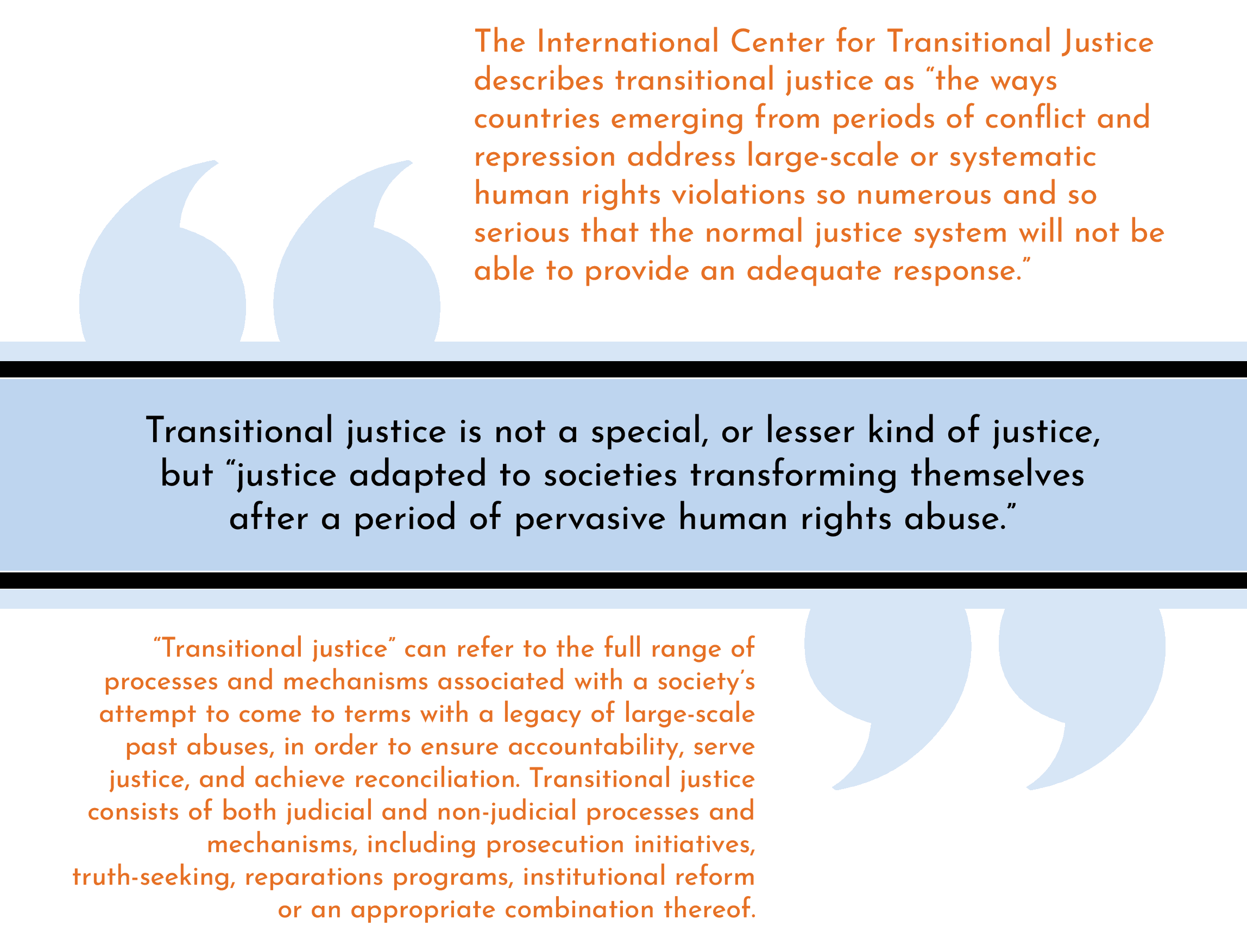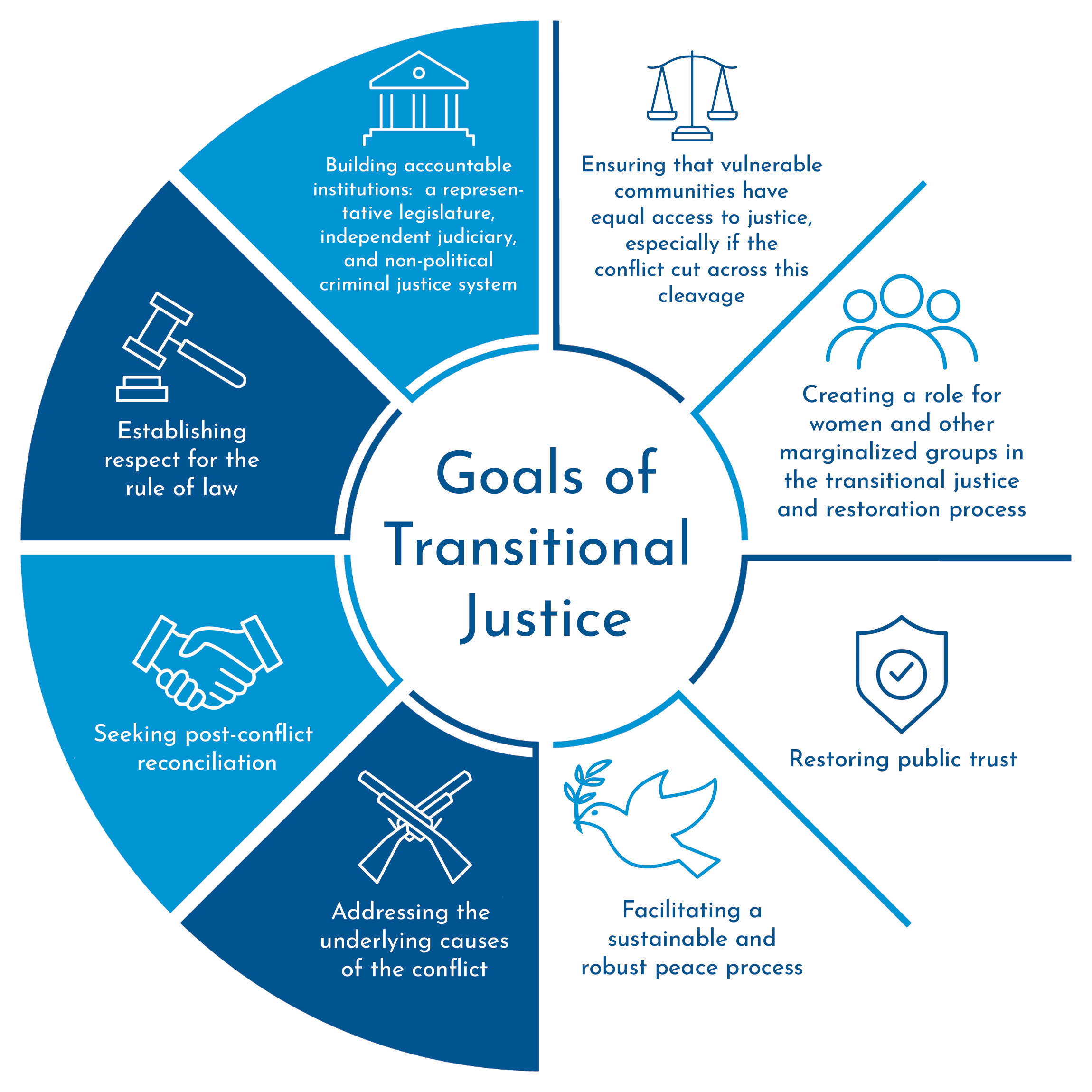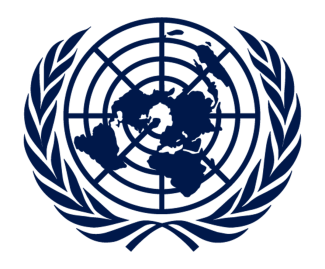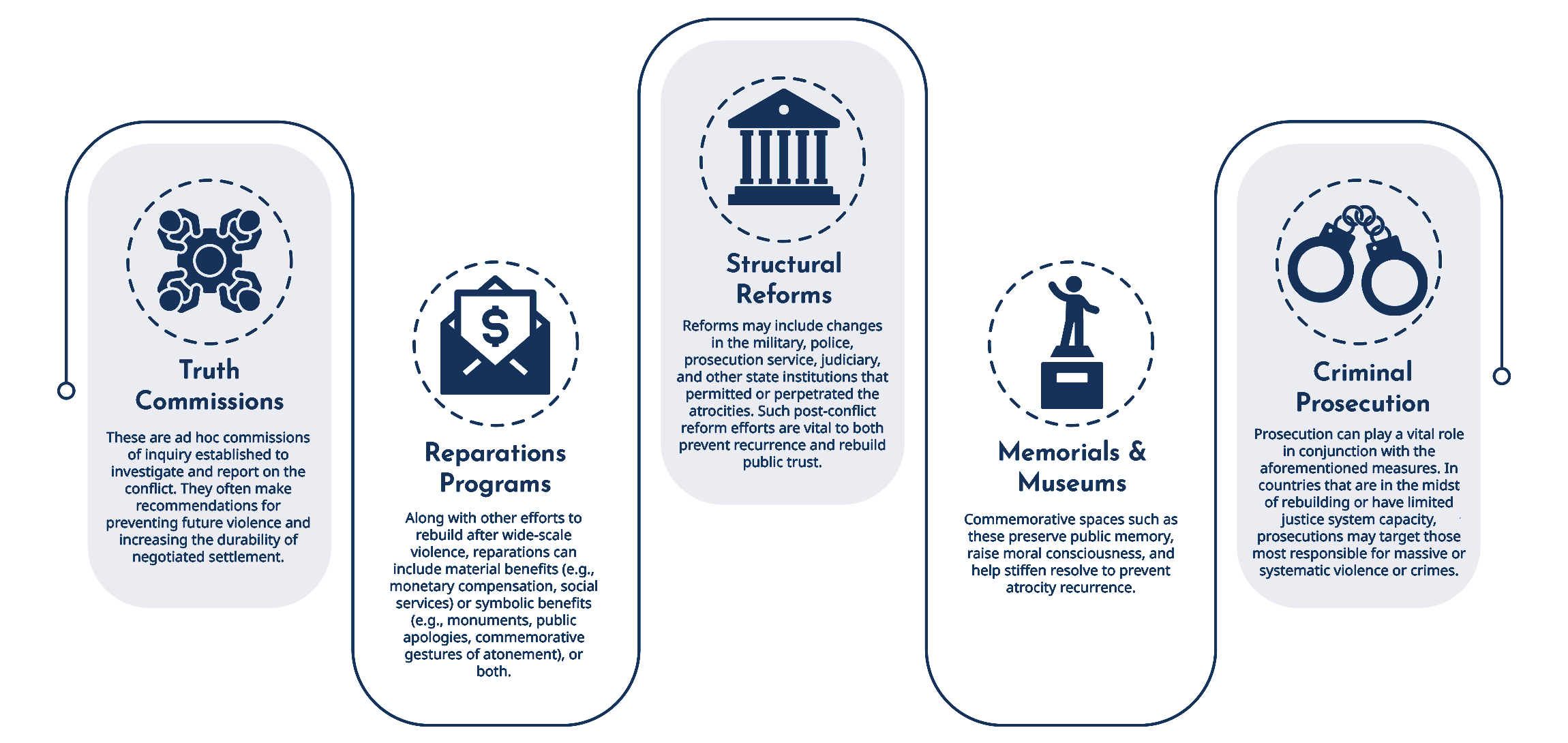In countries that have experienced a sustained period of conflict, repression, or human rights violations, the existing justice system may not be equipped to provide adequate recourse. In the aftermath of sustained periods of strife, political and legal institutions may have been found complicit in atrocities or otherwise ill-equipped to ensure accountability. At such times, judiciaries and criminal justice systems may also be weak, have few resources, or lack public trust.
Transitional justice has emerged as a mechanism for post-conflict communities by serving their immediate and long-term needs as they recuperate from systemic violence. Transitional justice offers victims a means for seeking redress and empowers societies to hold bad actors accountable while developing preventative strategies against future atrocities. A transitional justice approach achieves these goals by combining elements of criminal, restorative, and social justice.
Defining Transitional Justice

Goals of Transitional Justice
Although the structure and goals of a transitional justice system are shaped by a nation’s history and recent abuses, some elements are consistent across contexts: affirming the dignity of all persons; recognizing and redressing violations; and making efforts to prevent reoccurrence. Thus, those responsible for developing a nation’s transitional justice system can learn from and adapt methods that have previously been successful elsewhere.

Transitional Justice as Complementary
Survivors, citizens, and the international community often demand the prosecution of those responsible for human rights atrocities. However, prosecution alone, through “traditional” criminal justice mechanisms, may not be appropriate for all post-conflict contexts. Notably few post-conflict societies are fully functional; their criminal justice systems—including the judiciary, police, and prosecutors—may have been complicit in repression and violence. For societies with effective justice systems, however, cases of genocide or wide-spread human rights violations concern hundreds of thousands of victims and perpetrators—a scale that would overwhelm even fully functional criminal justice systems. Even more, the traditional criminal justice system often has barriers to entry, whereas transitional justice mechanisms enable broad participation.

The United Nations has outlined reparative measures that can be implemented through a transitional justice approach to complement any criminal justice procedures also undertaken. These include restitution, compensation, rehabilitation, satisfaction, and guarantees of non-repetition.
Transitional justice efforts are complementary of the criminal justice system and adopt a holistic approach to achieving justice for victims and survivors. As aforementioned, prosecution is not a one-size-fits-all solution: victims and survivors may seek commensurate redress beyond available legal remedies (e.g., incarceration) and find justice in conciliatory, reformative, and symbolic currency.

